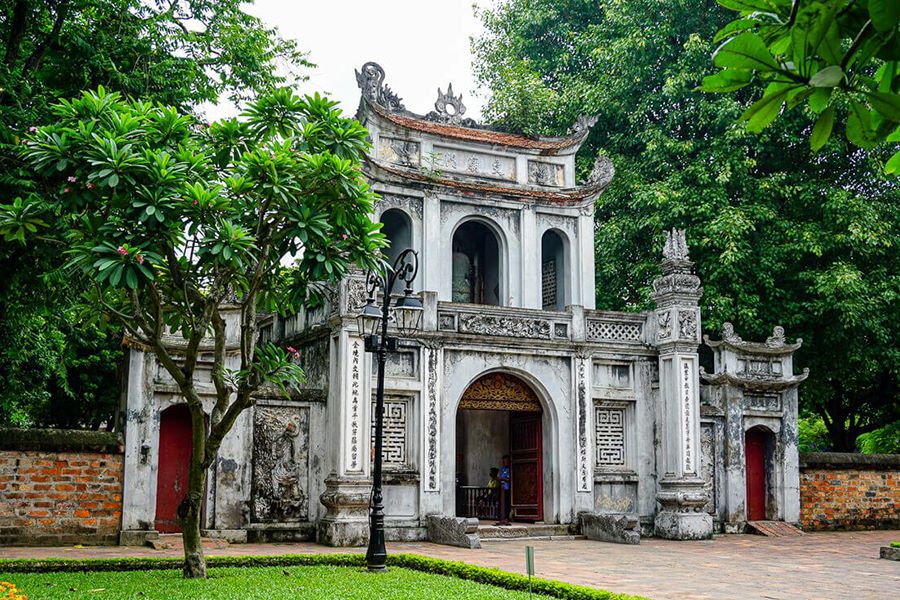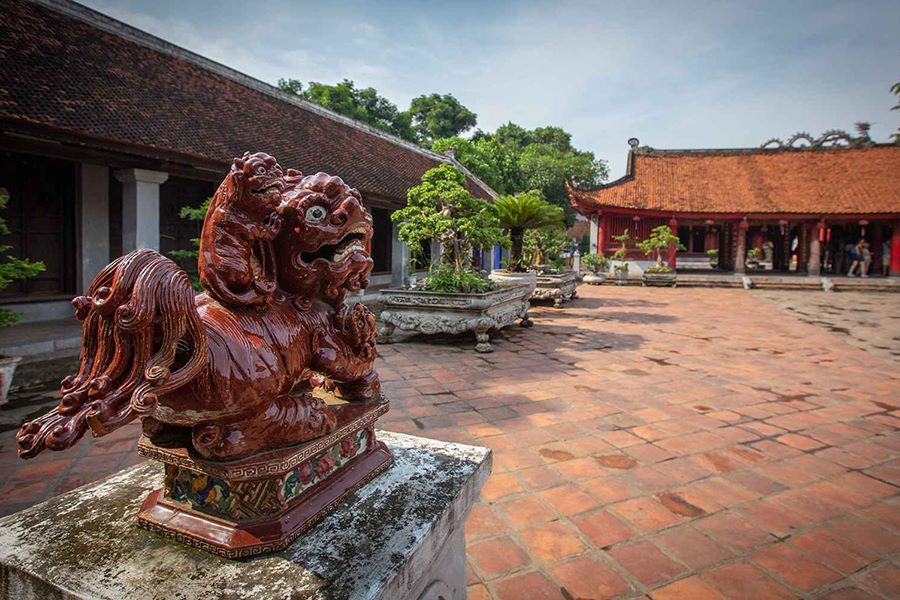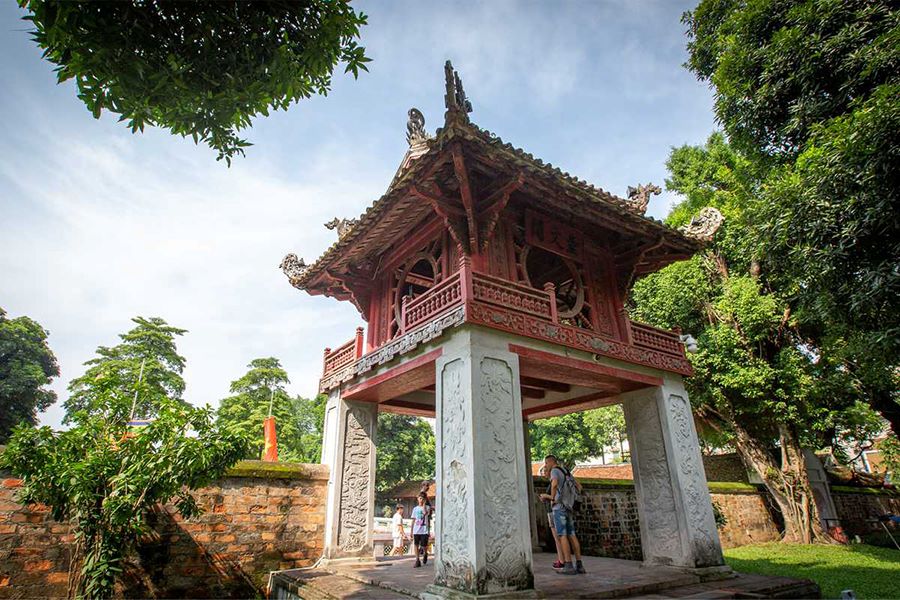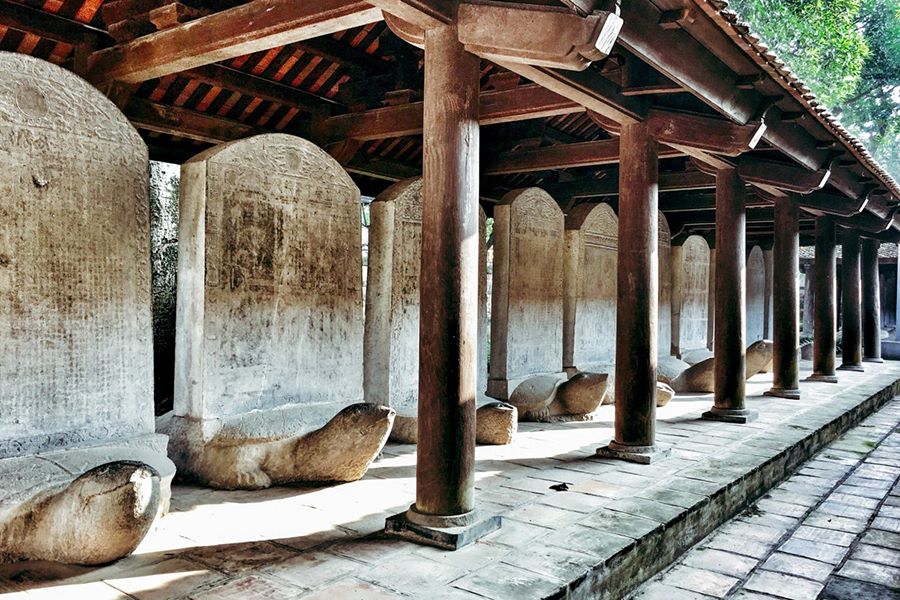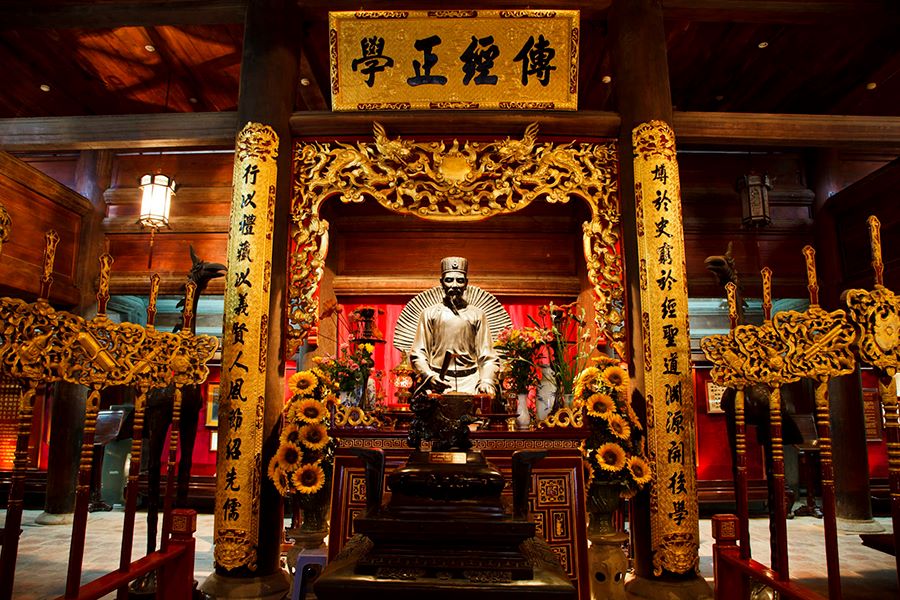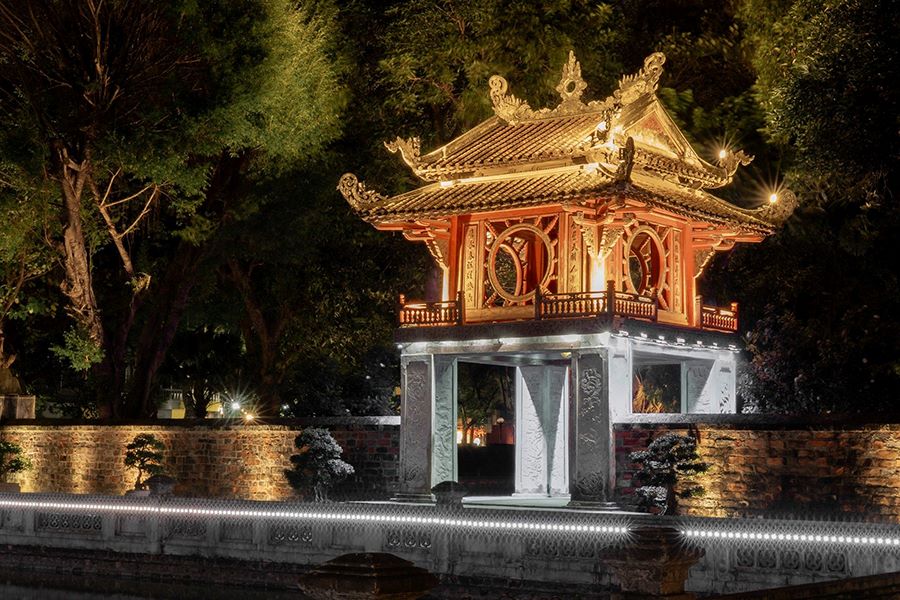Temple of Literature is the diverse complex of relics of Hanoi as well as an important historical–cultural site of Vietnam. This is the place where distinctive values of Vietnamese culture are honored and preserved. With such a thick history and a deep culture, the Temple of Literature these days has become a significant tourist destination, attracting travelers when visiting the capital – Hanoi in Indochina trip.
The History of the Temple of Literature
Temple of Literature was built in 1070 under the reign of King Ly Thanh Tong to worship the holy ancestors of Confucianism and also, had the function as a Royal School. The first student of that is Prince Ly Can Duc – the son of King Ly Thanh Tong.
In 1076, King Ly Nhan Tong Quoc Tu Giam ordered to building of another structure nearby as a school dedicated to the sons of the king and the courting.
In 1253, King Tran Thai Tong changed it into a National School, accepting all the children of civilians who had the outstanding academic ability. Until the dynasty of King Tran Minh Tong (1314 – 1329), the comprehensive teacher at that time – Chu Van An was appointed the principal, directly teaching the princes.
In 1370, after his death, King Tran Nghe Tong built a shrine to worship him inside the Temple of Literature, next to Confucius.
In 1785, King Le Hien Tong changed the Temple of Literature into the Thai Hoc House. In the Nguyen dynasty, it became Khai Thanh House.
The Architecture of the Temple of Literature
The entire architectural ensemble of the Temple of Literature is symmetrically designed according to the north-south axis, imitating the shrine for the worship of Confucius in his hometown (Shandong, China). However, the scale as well as structure here are simpler and bring the traditional architecture of Vietnam.
In front of the Temple of Literature, there is a lake called Van Chuong Lake, formerly known as Thai Lake. In the middle of the lake, Kim Chau Mound stands which was the place for sightseeing before.
The main gate has four pillars, Stelae commanding horsemen to dismount (Ha Ma Stelae) is on the two sides and the complex is surrounded by a high wall. On the gate there are 3 words that were written in the ancient Chinese characters, meaning Temple of Literature Gate.
The First Area - The Great Middle Gate
Inside, the temple is divided into 5 distinct areas, each area has a separate wall and a gate.
The 1st area starts from the main entrance to the Great Middle Gate (Dai Trung Gate), on both sides there are small gates including Thanh Duc Gate and Dat Tai Gate.
The Second Area - The Pavilion of Constellation
The 2nd area includes from the Great Middle Gate to the Constellation of Literature Pavilion (Khue Van Cac). Constellation of Literature Pavilion is not massive but has harmonious and beautiful architecture. It includes 4 brick square pillars (85 cm x 85 cm) underneath with the role of propping the upstairs which owns the very beautiful wooden structures. The upstairs has four circular doors, and the corridor and the roof are simply made of wood. The roof is designed according to the layering style of the square eight-roof structure, four round windows imitate radiating sun rays. It can be supposed that the Constellation of Literature Pavilion brings all the essence of the sky upon the earth. This was often used as a place for scholars to enjoy written poetry. On the two sides, Bi Van Gate and Suc Van Gate lead to the area of stelae of Doctors.
The Third Area - The Well of Heavenly Clarity & Turtles
The 3rd area included the square lake of Thien Quang. Two sides are the area of stelae of Doctors. Each stele is made of stone, and engraved with the name of the valedictorians of national examinations at that time. Stelae is set on the back of a turtle. Currently, there remain 82 steles of examinations from 1442 to 1779.
The Fourth Area - The Gate to Great Success
The 4th area is the center and the main structure of the Temple of Literature, consisting of two large projects in parallel and successive layouts. The outside compartment is the Worship Hall (Bai Duong), and the inside one is Thuong Cung.
The Fifth Area - The Grounds of Imperial Academy
The 5th area is Khai Thanh Temple, worshiping Confucius’s parents, connected to the 4th area by Khai Thanh Gate. This area has been recently rebuilt.
The final architecture is the forecourt and post court which were rebuilt in 1999. The forecourt has 9 compartments with 40 ironwood pillars, and brick walls. Today, this is the place for exhibiting materials showing the educational tradition of generations of Vietnamese people. The forecourt is connected to the postcourt in a small way. The post court is a wooden two-floor structure, in which, the downstairs consists of 9 compartments with 72 ironwood pillars, this is the honoring place of the renowned national professor Chu Van An – a world cultural celebrity, and the eminent educator of Vietnam. The upstairs is the place of worship of kings who contributed to construct the Temple of Literature as well as the Confucianism education of the nation, including Ly Thanh Tong, Ly Nhan Tong, and Le Thanh Tong.
Currently, the Temple of Literature is also a venue for important cultural activities such as scientific seminars, thematic exhibitions, the place to praise outstanding valedictorians of universities in Hanoi and to give certificates for the titles of Professor, Associate Professor…or to celebrate books festivals, poetry days …
Night Tour at Temple of Literature
Under the glittering lights of the night, every architectural relic and heritage place within the Temple of Literature - Imperial Academy sparkles brighter and more dazzling than before. Nonetheless, Vietnam's first national institution established during the feudal era has managed to retain its dignity and seriousness. Visitors will definitely have a unique experience because they will be able to view the old school from a different angle, resulting in a beautiful fusion of the past and current.
The Temple of Literature - Imperial Academy, a sophisticated national university that embodies knowledge and ethics, tradition and modernity, will continue to captivate and acquaint guests in the shimmering golden light of the night. This night trip is a spiritual as well as a tourist experience, blending culture and history with contemporary living.
Temple of Literature – Entrance Fees, Opening Hours & Dresscode
Opening Hours & Entrance Fees
Opening hours: 8 am - 5 pm daily
Entrance fee:
- Adults: 70,000 VND
- Students: 35,000 VND (student cards required)
How to Get to the Temple of Literature
Four main streets—Nguyen Thai Hoc, Ton Duc Thang, Van Mieu, and Quoc Tu Giam—are close to the Temple of Literature. You may easily travel to the temple from any location in Hanoi. You can use Google Maps to find the directions and drive here on your own, or you can use a local ride-hailing app like Grab or Gojek to arrange for a ride. Buses 2, 23, 38, 25, 4, and other numbers offer stops close to the temple if you choose to travel by bus.
Temple of Literature’s Rules & Dresscode
Please take heed of the following before visiting the temple:
- Be respectful of others by not wearing skimpy clothing
- Keep noise levels down, especially in the vicinity of prayer areas;
- Bring cash because credit cards are not accepted at the ticket counter.

